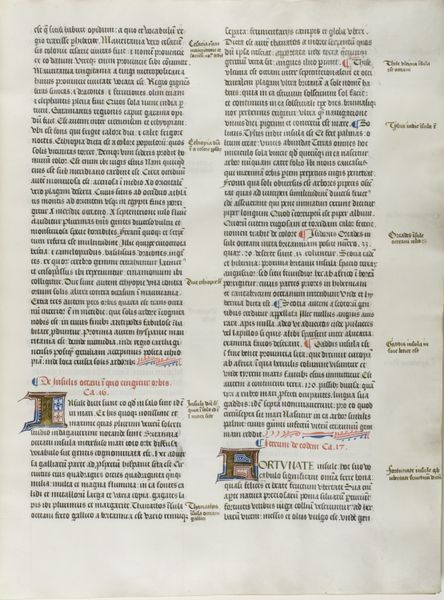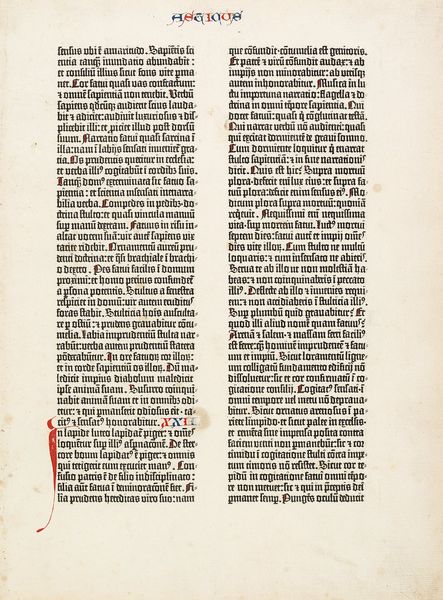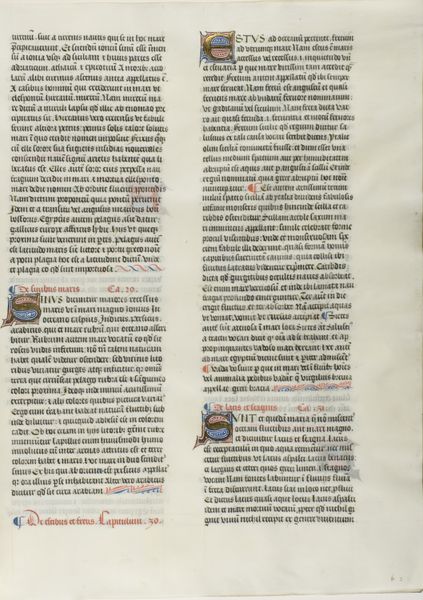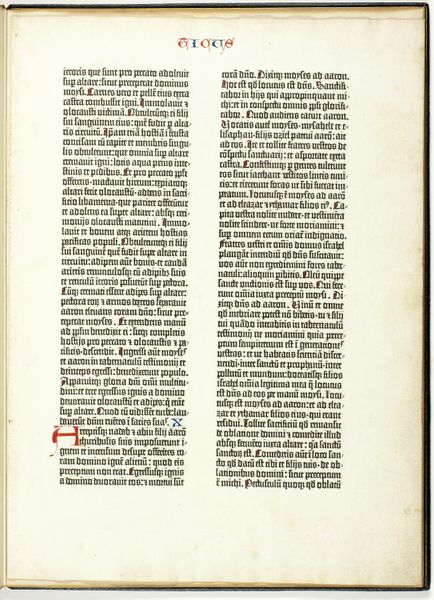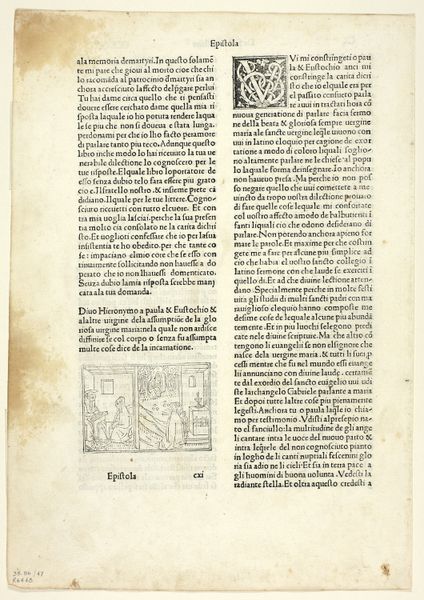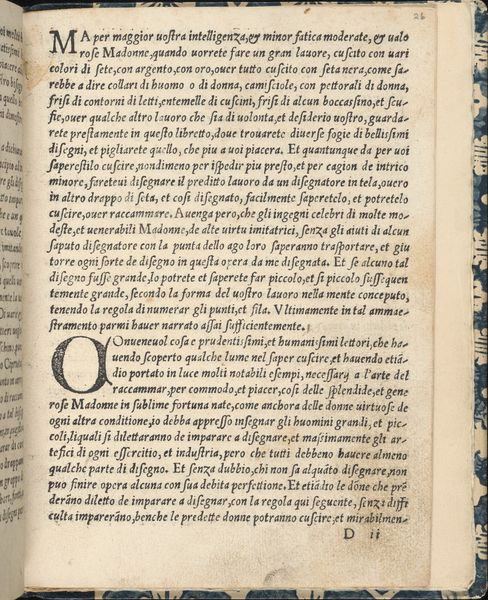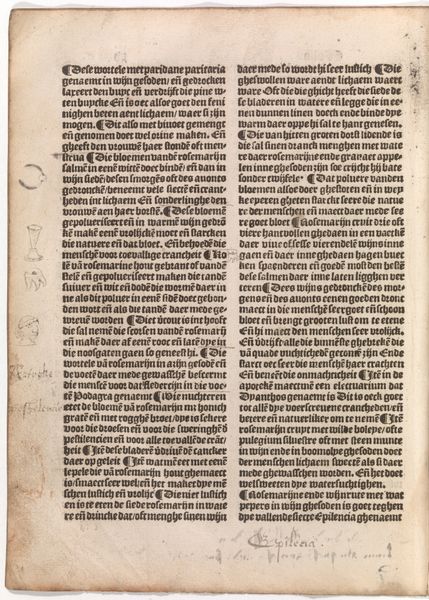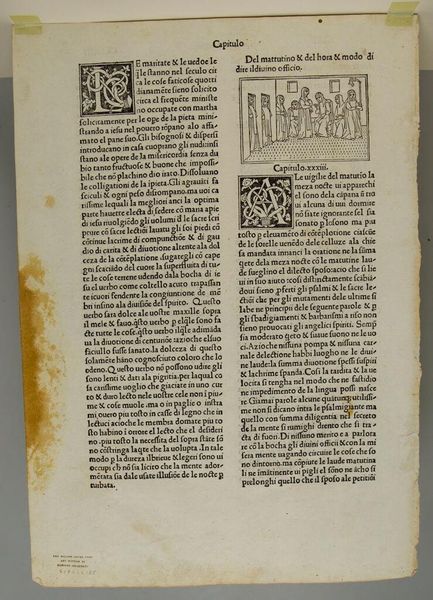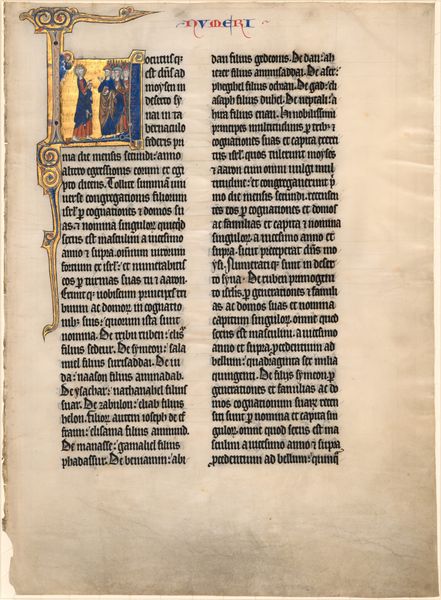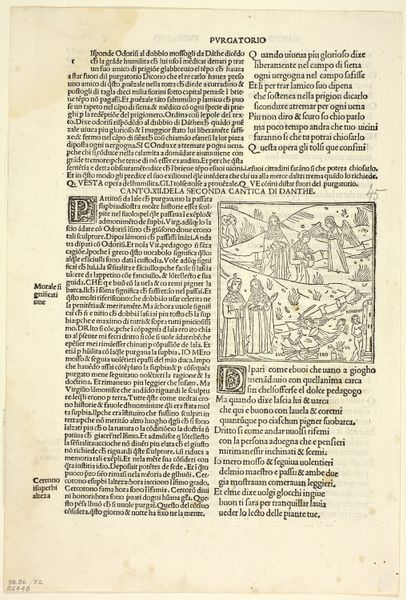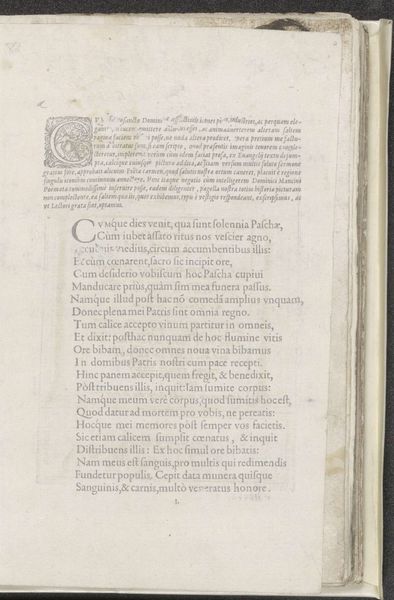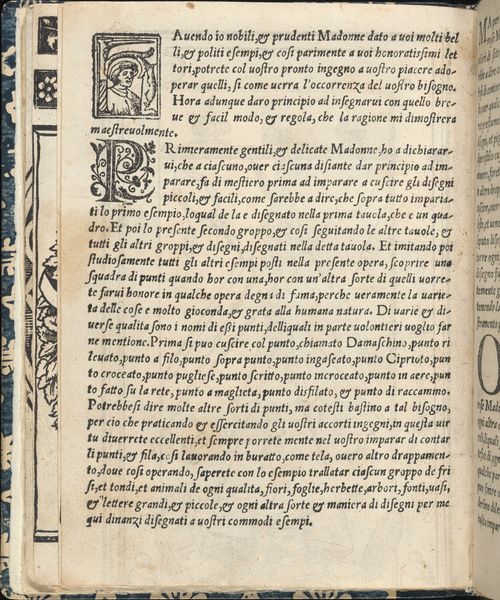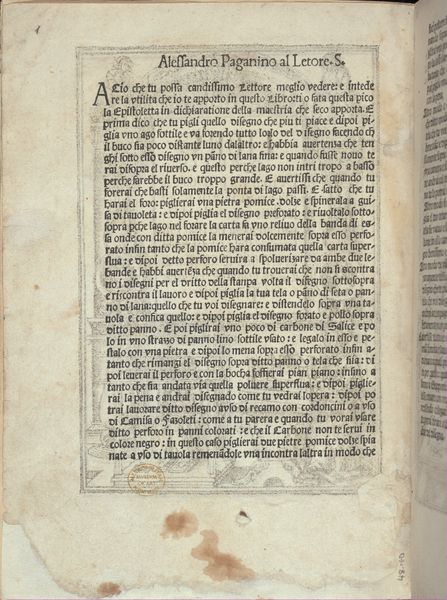
Folio Twenty from Burchard of Sion's De locis ac mirabilibus mundi, or an Illuminated Geography c. 1460
0:00
0:00
drawing, print, paper, ink
#
drawing
#
medieval
# print
#
paper
#
ink
Dimensions: 500 × 390 mm (average)
Copyright: Public Domain
Curator: Looking at this page, I’m immediately drawn into a world of intricate detail. The density of the text, balanced with those touches of vibrant color in the illuminated letters – there’s something deeply comforting and absorbing about it. Editor: Indeed. We’re observing Folio Twenty from Burchard of Sion’s *De locis ac mirabilibus mundi*, or *An Illuminated Geography*, created around 1460. Burchard, as we know, was a 13th-century pilgrim, and his accounts—though written centuries earlier—became incredibly popular during the medieval era. This particular example, residing at the Art Institute of Chicago, is rendered in ink on paper, using both drawing and print techniques. Curator: So, beyond its immediate visual appeal, this object essentially documents the medieval imagination. Are we seeing not just a map of physical places, but of beliefs, anxieties, even dreams? The illuminations, for instance… Editor: Precisely. The illustrations become vehicles for projecting contemporary societal understandings. Each initial depicts various 'signs and wonders,' shaping an encyclopedia for marvels of the East. Curator: The initial “I”, if you can see it, includes the images of fabulous humanoids— headless creatures with eyes on their shoulders. Now there is an intriguing insight on alterity and perception. This manuscript bridges physical description and profound cultural anxiety. It hints at what lies beyond known borders—literally and figuratively. What can it show us about those who perused it then? Editor: That such an object held prestige within elite circles gives some insights to those audiences—elucidating the expectations and the status they were keen to emulate. In essence, an attempt to comprehend the wider world through both 'science' and faith. Curator: Ultimately, though a single leaf, it stands as testament to our endless human desire to understand—and depict—our place within the cosmos, however we conceive it. Editor: Quite right. This page encapsulates that beautiful tension between the known and unknown, the real and imagined, that defines so much of our interaction with the world even today.
Comments
No comments
Be the first to comment and join the conversation on the ultimate creative platform.
